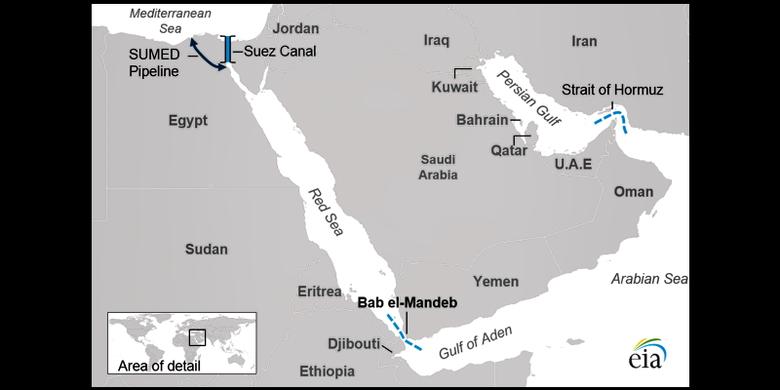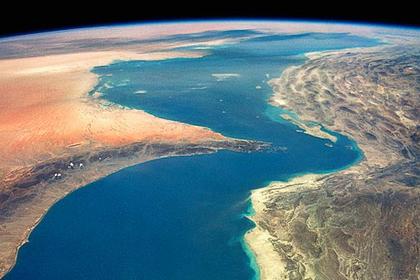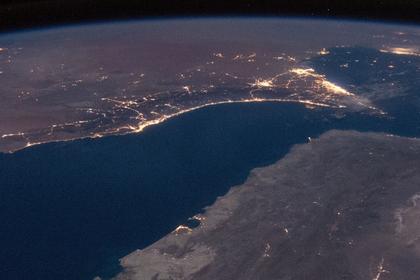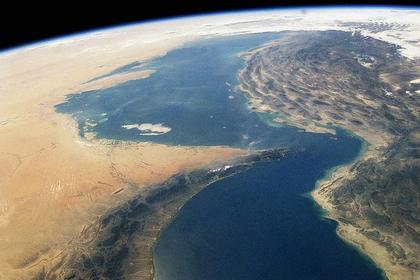
STRATEGIC BAB EL-MANDEB

U.S. EIA - The Bab el-Mandeb Strait is a sea route chokepoint between the Horn of Africa and the Middle East, connecting the Red Sea to the Gulf of Aden and Arabian Sea. Most exports of petroleum and natural gas from the Persian Gulf that transit the Suez Canal or the SUMED Pipeline pass through both the Bab el-Mandeb and the Strait of Hormuz.
Chokepoints are narrow channels along widely used global sea routes that are critical to global energy security. The Bab el-Mandeb Strait is 18 miles wide at its narrowest point, limiting tanker traffic to two 2-mile-wide channels for inbound and outbound shipments.
Closure of the Bab el-Mandeb Strait could keep tankers originating in the Persian Gulf from transiting the Suez Canal or reaching the SUMED Pipeline, forcing them to divert around the southern tip of Africa, which would increase transit time and shipping costs.
In 2018, an estimated 6.2 million barrels per day (b/d) of crude oil, condensate, and refined petroleum products flowed through the Bab el-Mandeb Strait toward Europe, the United States, and Asia, an increase from 5.1 million b/d in 2014. Total petroleum flows through the Bab el-Mandeb Strait accounted for about 9% of total seaborne-traded petroleum (crude oil and refined petroleum products) in 2017. About 3.6 million b/d moved north toward Europe; another 2.6 million b/d flowed in the opposite direction mainly to Asian markets such as Singapore, China, and India.
Before 2015, volumes of liquefied natural gas (LNG) passing through the Bab el-Mandeb Strait matched those passing through the Suez Canal because the Red Sea did not have any LNG infrastructure. In 2015, both Jordan and Egypt began importing small volumes of LNG into Red Sea ports, and these countries' imports of LNG peaked in 2016 at 1.4 billion cubic feet per day, 80% of which was delivered through the Bab el-Mandeb Strait.
More recently, as new natural gas fields in Egypt have come online, the need for Egypt to import LNG has decreased. Like flows to Egypt, total northbound flows of LNG via the Bab el-Mandeb have also decreased since 2016 as northbound flows to other destinations have remained fairly constant.
-----
Earlier:
















